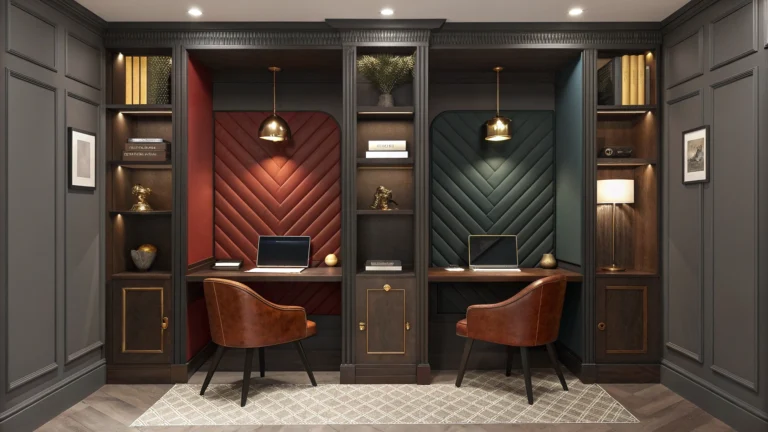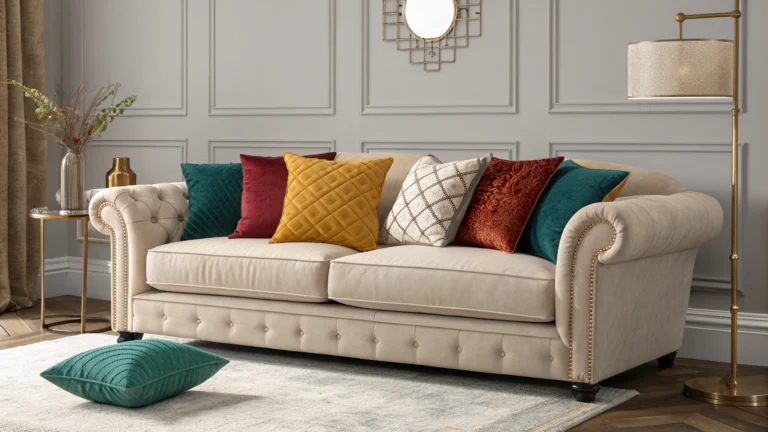How to Style a Statement Wall Without Overdoing It
A statement wall can completely transform a room. But done wrong, it can feel too loud, too busy, or just plain overwhelming. The secret is balance—creating impact without letting one wall take over your entire space.
If you’re ready to try this design trick, here’s how to style a statement wall so it looks chic, polished, and never “too much.”

1. Start With a Clear Purpose
Ask yourself: what’s the role of this wall?
- Do you want it to draw attention to your sofa?
- Highlight your bed as the focal point?
- Break up a plain room with color or texture?
Knowing the “why” helps you choose the right style, whether bold paint, wallpaper, or texture.

2. Pick One Feature, Not Three
A common mistake is doing everything at once: bright paint, busy wallpaper, and oversized art. Instead, stick to one main statement.
- Bold paint? Keep the wall art minimal.
- Textured wood paneling? Choose simple furniture against it.
- Graphic wallpaper? Let it shine without clutter.
The wall should wow—without competing elements.

3. Choose Colors That Work With the Room
Your statement wall doesn’t live in isolation. Make sure it complements the rest of the space.
- For small rooms, try lighter shades to avoid shrinking the space.
- For modern interiors, deep hues like navy, charcoal, or emerald work beautifully.
- In neutral rooms, add contrast with soft pastels or a single bold accent color.
Balance boldness with harmony.

4. Experiment With Texture
Color isn’t the only way to make a wall pop. Texture adds depth without shouting. Try:
- Shiplap or wood slats for warmth.
- Exposed brick for an industrial vibe.
- Limewash paint for a soft, lived-in feel.
- Fabric panels for a cozy, unique finish.
Texture creates visual interest that feels layered and natural.

5. Keep Furniture and Decor Simple
If the wall is the star, let it shine. Place neutral furniture or simple accessories against it. For example:
- A gray sofa looks great against a bold wallpaper.
- White bedding balances a painted headboard wall.
- A minimalist console makes textured paneling pop.
Too many competing pieces will dilute the effect.

6. Use Art and Mirrors Wisely
Want to add art to your statement wall? Keep it cohesive.
- A single oversized piece can anchor the wall.
- A gallery wall works if the background is subtle.
- Mirrors add light and dimension without visual clutter.
Less is more when styling over a bold backdrop.

7. Play With Lighting
Lighting can enhance the drama without overwhelming the design.
- Wall sconces highlight textured finishes.
- Picture lights draw attention to art.
- LED strips or spotlights make bold paint glow.
Think of lighting as jewelry for your statement wall—it finishes the look.

8. Don’t Forget Balance in the Room
The statement wall should grab attention but not feel disconnected. Balance it with:
- Smaller accents in the same color elsewhere (pillows, rugs, vases).
- Neutral tones throughout the rest of the space.
- A layout that draws the eye naturally toward the feature wall.
This creates flow instead of a jarring “one-wall-only” effect.

9. Consider Temporary Options
If you rent or love changing styles often, choose flexible solutions:
- Peel-and-stick wallpaper.
- Removable decals.
- Large-scale art panels you can move.
These keep your design fresh without permanent commitment.

10. Step Back and Edit
When you finish, step back and look at the whole room. Ask yourself:
- Does the wall feel connected to the space?
- Is it overpowering the furniture?
- Would removing one accessory make it cleaner?
Editing is the key to keeping a statement wall sophisticated.

Quick Ideas for Chic Statement Walls
- Deep navy paint behind a crisp white bed.
- Botanical wallpaper in a reading nook.
- A shiplap wall behind a dining table.
- A gallery of black-and-white photos on a soft beige wall.
- A limewash wall in the living room for subtle drama.
Final Thoughts
A statement wall is about impact, not excess. With the right balance of color, texture, and simplicity, you can create a stunning focal point that feels natural, stylish, and timeless.
Tip: Start small—pick one wall and one feature. Keep the rest simple. You’ll be amazed at how one thoughtful wall can transform your entire room.






